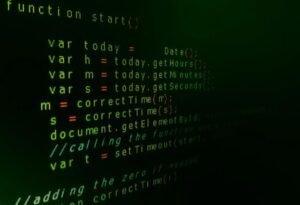What Is Media Training?
Media training is a form of education that helps individuals prepare and improve their interaction with the media. It focuses on enhancing communication skills, building confidence, and delivering effective messages across various media platforms such as television, radio, print, and online. With the increasing importance of media in today’s society, media training has become a valuable tool for professionals, spokespersons, and public figures to effectively manage and control their public image.
Key Takeaways
- Media training assists individuals in improving their communication skills and interactions with the media.
- It focuses on building confidence and delivering effective messages across different media platforms.
- Professionals and public figures can utilize media training to manage their public image.
Why is Media Training Important?
Media training is crucial as it equips individuals with the necessary tools to effectively navigate through media interactions. It helps them anticipate challenging questions, prepare impactful responses, and maintain a positive public image. With media training, individuals can confidently communicate their key messages, handle difficult interviews, and respond to crisis situations in a controlled manner.
*Media training enables professionals to effectively manage their public image, ensuring information is accurately portrayed and reducing the risk of misinterpretation.*
What Does Media Training Cover?
Media training covers various aspects of media relations, interview techniques, and message delivery. It typically includes the following essentials:
- Understanding different types of media and their goals.
- Developing key messages and staying on point during interviews.
- Learning effective interview techniques, such as bridging and flagging.
- Mastering body language and non-verbal communication.
- Practicing spokesperson skills and maintaining composure under pressure.
- Handling difficult questions and addressing controversies.
- Navigating crisis situations and managing public perception.
Benefits of Media Training
Media training offers numerous benefits to individuals and organizations alike. Some of the key advantages include:
- Improved communication skills and message delivery.
- Enhanced confidence and control in media interactions.
- Effective management of public image and reputation.
- Reduced risk of miscommunication or misinterpretation.
- Ability to handle difficult questions and crises more efficiently.
- Increased media visibility and positive media coverage.
Media Training Statistics
| Stat | Data Point |
|---|---|
| Percentage of executives | 72% |
| Organizations that consider media training important | 86% |
How to Find Media Training
If you are interested in media training, there are several avenues to explore. Consider the following options:
- Research reputable media training companies and organizations.
- Check with professional associations and industry-specific institutes.
- Inquire with public relations agencies that offer media training services.
- Seek recommendations from colleagues or trusted individuals in your field.
Media Training Tips
| Tips | Description |
|---|---|
| Prepare key messages | Identify and craft concise, impactful messages in advance. |
| Anticipate challenging questions | Practice responding to potential difficult or controversial questions. |
| Control body language | Be aware of non-verbal cues and maintain a confident and approachable posture. |
Conclusion
Media training is an essential tool for individuals and organizations to effectively communicate and navigate through media interactions. By developing strong communication skills, building confidence, and mastering message delivery techniques, media training empowers individuals and ensures they present themselves and their organization in the best possible light.

Common Misconceptions
Media Training Makes You “Fake”
One common misconception people have about media training is that it teaches individuals to be “fake” or artificial in their interactions with the media. In reality, media training focuses on helping individuals gain effective communication skills, such as staying on message, delivering concise answers, and properly handling difficult questions. These techniques are designed to enhance authenticity and confidence, not create a false persona.
- Media training emphasizes the importance of remaining true to oneself.
- It teaches individuals to effectively communicate their messages without losing their authenticity.
- Media training equips individuals with the necessary skills to handle interviews confidently and honestly.
Media Training Is Only for Celebrities and Public Figures
Another common misconception is that media training is exclusively for celebrities and public figures. While it is true that media training is often associated with high-profile individuals, the reality is that anyone who interacts with the media can benefit from it. From business executives to nonprofit organizations, media training can provide valuable skills to anyone who needs to communicate effectively with journalists and the public.
- Media training is suitable for professionals in various industries.
- It helps individuals in building strong relationships with the media.
- Media training equips individuals to handle crisis situations and media scrutiny professionally.
Media Training Teaches You to Dodge Questions
Some people believe that media training teaches individuals to dodge questions asked by journalists. However, the purpose of media training is not to avoid answering questions but rather to teach strategies for handling difficult or sensitive questions in a professional and appropriate manner. Media training encourages individuals to provide clear and concise responses while staying on message.
- Media training provides techniques to navigate challenging questions while answering them effectively.
- It teaches individuals to address questions honestly while staying on message.
- Media training helps individuals understand how to bridge from difficult questions to their intended message.
Media Training Is a One-Time Event
Some people mistakenly believe that media training is a one-time event that can be completed and forgotten. However, media training is an ongoing process, particularly as media landscapes and technologies evolve. Continuous training allows individuals to refine their skills, adapt to changing media trends, and remain in control during media interactions.
- Media training should be seen as an ongoing investment in one’s professional development.
- It is important to stay updated on media trends and adapt media training accordingly.
- Regular practice and reinforcement of media training techniques help individuals maintain their skills over time.
Media Training Is a Waste of Time and Resources
Many people mistakenly underestimate the value of media training and view it as a waste of time and resources. However, media training can be incredibly beneficial in various ways. It can help individuals improve their public speaking skills, boost their confidence, enhance their message delivery, and build positive relationships with the media.
- Media training can significantly improve one’s communication skills, both in media interactions and in other professional settings.
- It allows individuals to effectively communicate their key messages, ensuring they are accurately conveyed to the public.
- Media training can prevent miscommunication and potential reputation damage during media encounters.

Media Training for Public Figures
Media training is a crucial aspect of preparing public figures to effectively communicate with the press and the general public. Through media training, individuals can learn to articulate their message clearly, handle tough questions, and project a positive image. The following tables showcase various aspects of media training and its significance in shaping public perception.
Notable Public Figures Who Have Undergone Media Training
The following table highlights a few well-known public figures who have undergone media training and the impact it has had on their public image and communication skills:
| Name | Profession | Before Media Training | After Media Training |
|---|---|---|---|
| Barack Obama | Politician | Occasionally stumbled during interviews | Became a polished and charismatic speaker |
| Oprah Winfrey | Talk Show Host | Struggled with maintaining composure | Gained confidence and composure in public speaking |
| Elon Musk | Entrepreneur | Often misunderstood in interviews | Became more adept at conveying complex ideas succinctly |
Impact of Media Training on Message Delivery
Effective media training allows public figures to enhance the delivery of their message, ensuring their intended meaning is conveyed clearly. The table below demonstrates the impact of media training on message delivery:
| Aspect | Before Media Training | After Media Training |
|---|---|---|
| Clarity | Message often unclear and convoluted | Developed concise and easily understandable messages |
| Consistency | Mixed messaging resulted in confusion | Consistency in messaging across different platforms |
| Emotional Appeal | Difficulty in connecting emotionally with the audience | Refined skills to engage and appeal to emotions |
The Importance of Handling Tough Questions
Media training equips public figures with the skills to handle tough questions and navigate challenging interviews. The following table demonstrates the significance of preparing for difficult queries:
| Situation | Without Media Training | With Media Training |
|---|---|---|
| Question about scandal | Avoided or stumbled through answers | Leveraged techniques to address the issue confidently |
| Personal attack | Reacted defensively or emotionally | Learned to remain composed and respond tactfully |
| Difficult hypothetical scenario | Provided irrelevant or uncertain responses | Adopted techniques to provide thoughtful and strategic answers |
Elements of Media Training
Media training incorporates various elements to enhance an individual’s communication skills. The table below showcases key elements of media training:
| Element | Description |
|---|---|
| Messaging | Creating impactful and succinct messages |
| Body Language | Understanding and improving non-verbal communication |
| Tone of Voice | Learning to modulate voice for different contexts |
| Interview Simulation | Practicing interviews to simulate real-world scenarios |
Media Training Success Stories
The success of media training is demonstrated by the positive outcomes experienced by public figures. The following table showcases a few media training success stories:
| Public Figure | Field | Changed Perception |
|---|---|---|
| Meghan Markle | Royal Family | Transitioned from inexperienced to confident public speaker |
| Malala Yousafzai | Activism | Mastered conveying powerful messages with conviction |
| Warren Buffett | Investing | Developed a relatable and trustworthy public image |
Media Training Impact on Public Perception
Media training can significantly influence public perception of individuals. The table below outlines the impact of media training on public perception:
| Aspect | Before Media Training | After Media Training |
|---|---|---|
| Confidence | Appeared unsure and lacked confidence | Exuded confidence, leading to increased credibility |
| Trustworthiness | Misinterpreted or doubted due to communication style | Developed trust and authenticity through improved communication |
| Relatability | Struggled to connect with different audiences | Enhanced relatability, fostering stronger connections |
The Return on Investment of Media Training
Media training, although an investment, can yield significant returns in terms of public image and effective communication. Consider the following table:
| Investment | Returns |
|---|---|
| Time | Enhanced communication skills and interview performance |
| Financial Cost | Improved public image leading to increased opportunities |
| Effort | Increased credibility and positive perception |
Media Training in Various Fields
Media training is beneficial for public figures across various fields. The following table presents examples of professions that greatly benefit from media training:
| Field | Justification |
|---|---|
| Politics | Ensures effective messaging during campaigns and political debates |
| Celebrities | Improves their ability to handle media scrutiny and public appearances |
| Corporate Executives | Enables effective communication during press conferences and interviews |
Media Training: A Necessity for Public Engagement
Effective media training is vital for public figures to convey their message, shape public perception, and establish credibility. By honing communication skills and learning to navigate challenging situations, individuals can successfully engage with the media and the audience they wish to reach.
Frequently Asked Questions
What is media training?
Media training is a specialized training program that helps individuals or organizations improve their skills and confidence in dealing with media interactions. It provides guidance on how to effectively communicate key messages, handle difficult questions, and manage various media platforms.
Why is media training important?
Media training is important because it equips individuals with the necessary skills to navigate the complex landscape of media. It helps them deliver their messages clearly, manage their reputation, handle crisis situations, and build positive relationships with the media.
Who can benefit from media training?
Media training can benefit anyone who is likely to interact with the media, such as business executives, public figures, spokespersons, politicians, and professionals in various fields. It is also useful for organizations that want to enhance their media presence and effectively communicate their brand.
What are the key components of media training?
The key components of media training typically include message development, interview techniques, media etiquette, crisis communication, body language, and understanding media platforms. These components are tailored to the specific needs and goals of the individuals or organizations undergoing the training.
How long does media training usually last?
The duration of media training varies depending on the specific program or course. It can range from a few hours to multiple days, depending on the depth of knowledge and practice required. The training can be conducted as a one-time session or as part of an ongoing program.
What are the benefits of media training?
The benefits of media training include improved communication skills, increased confidence in media interactions, enhanced ability to deliver key messages effectively, better handling of difficult questions, improved media relations, and the ability to manage crisis situations more effectively.
How can media training improve public speaking skills?
Media training helps individuals improve their public speaking skills by providing guidance on message development, delivery techniques, and body language. It teaches them how to engage and connect with their audience, convey their ideas clearly, and effectively respond to questions or challenges.
Can media training help with crisis communication?
Yes, media training can significantly help with crisis communication. It prepares individuals to handle sensitive or negative situations in the media by teaching them how to respond calmly, take control of the narrative, and protect their reputation. It also helps them understand the importance of timely and transparent communication during a crisis.
Where can I find a media training program?
Media training programs can be found through various sources such as professional training organizations, public relations agencies, communication schools, and online platforms. It is important to research and evaluate the options available to find a program that suits your specific needs and goals.
How much does media training usually cost?
The cost of media training can vary depending on factors such as the duration of the program, the level of customization, the expertise of the trainers, and the location. It is advisable to contact different training providers to inquire about their pricing and compare the offerings before making a decision.




